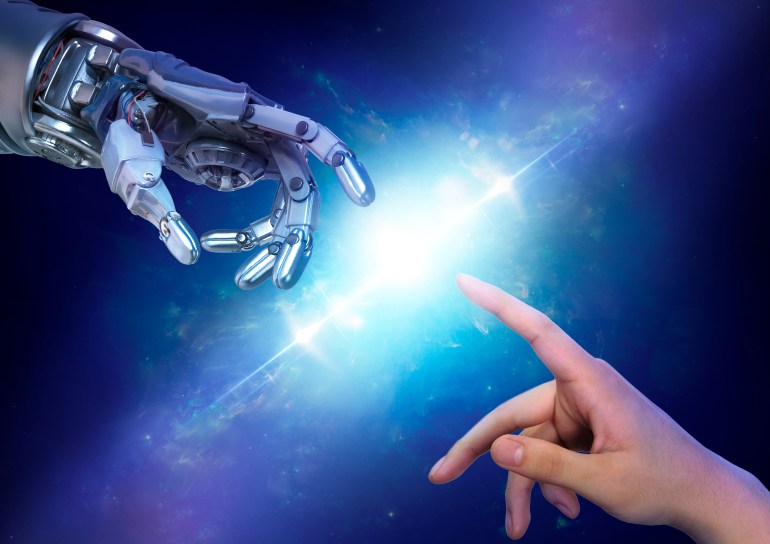Scientists are constantly trying to develop artificial intelligence and try to bridge the gap between it and human intelligence.
And in recent recent experiments, scientists have noticed that some AI programs have begun to work very closely with the human brain.
The study indicated that automated networks operate very closely to the human brain.
A decade ago, scientists have taught many of the most sophisticated AI systems using huge data stores to "train" an artificial neural network to correctly distinguish between things.
Such “closely supervised” training requires that data be sorted by humans, which is very laborious, and neural networks often take shortcuts to learn to put things together with minimal information, sometimes superficially.
For example, an artificial neural network (a group of computers linked together) might use the presence of grass to recognize an image of a cow, because cows are usually photographed in the fields.
A cross between animal intelligence and artificial intelligence
"Computers and artificial intelligence programs don't really learn the subject matter, but they do a good job on the test," said Alexei Efros, a computer scientist at the University of California, Berkeley.
Moreover, for researchers interested in the intersection of animal and artificial intelligence, this "supervised learning" may be limited in what it can reveal about the workings of biological brains, since animals and humans do not use labeled data sets as their sole source of learning, but rather rely on Her experiences are based on her exploration of the environment on her own which leads to her gaining a rich and powerful understanding of the world.
Today, some experts in computational neuroscience (the study of brain function in light of the information-processing properties of the structures that make up the nervous system) are beginning to explore automated neural networks that have been trained with little data that humans have categorized.
"Self-learning" algorithms for machines have proven hugely successful in learning human languages (Getty Images)
Matches with animal brain functions
Machine “self-learning” algorithms have proven to be very successful in learning human languages, and recently they have succeeded in recognizing and distinguishing between images.
In a recent study, computational models constructed to be close to mammalian visual and auditory systems and designed using self-supervised learning models for AI programs showed a closer match with brain function than their supervised learning counterparts.
For some neuroscientists, it appears that artificial networks are beginning to reveal some of the actual methods that human and animal brains use to learn.
Neuroscientists developed simple computer models of a visual system using robotic neural networks when monkeys were shown the same images as opposed to artificial neural networks.
For example, the activity of real neurons and artificial neurons showed interesting correspondences that were very similar, and on one occasion scientists discovered models of communication between machines that were trying to detect sounds and smells.
Through repeated trial and error of artificial intelligence programs and connected neural robotic networks, scientists are beginning to see a unique model of learning approximating the human method.
"I think there's no question that 90% of what the brain does is self-supervised learning," says Blake Richards, a computational neuroscientist at the AI Cebic institute.
And brains learn from their mistakes on their own, too. Only a small part of our brain's reactions come from an external source that tells us the answer is wrong.
Close results
Richards and his team created a self-supervised model for machines that help answer different questions. They trained an AI that combined two different neural networks: One, called ResNet, was designed to process images.
A second network, known as the recurrent network, can focus on moving objects.
Richards' team found that AI trained using RaceNet was good at recognizing objects, but not at categorizing motion.
But when they divided the communication network into two parts, this led to the creation of two paths (without changing the total number of neurons), the AI developed a section to recognize static objects and another for moving objects, allowing it to finally classify the scenes that are presented to it, which scientists believe is the method that our human brains work with.
To test the AI further, the research team showed the artificial neural network and a group of mice a number of videos.
It is noteworthy that the brains of mice have areas of the brain specialized in static images and those that are characterized by movement.
In the end, scientists confirmed that the human or animal brain is full of so-called feedback connections, while current models of AI have very few, if any, of these connections, a critical question of how advanced AI programs are. One of the most important distinguishing factors of the human brain.

